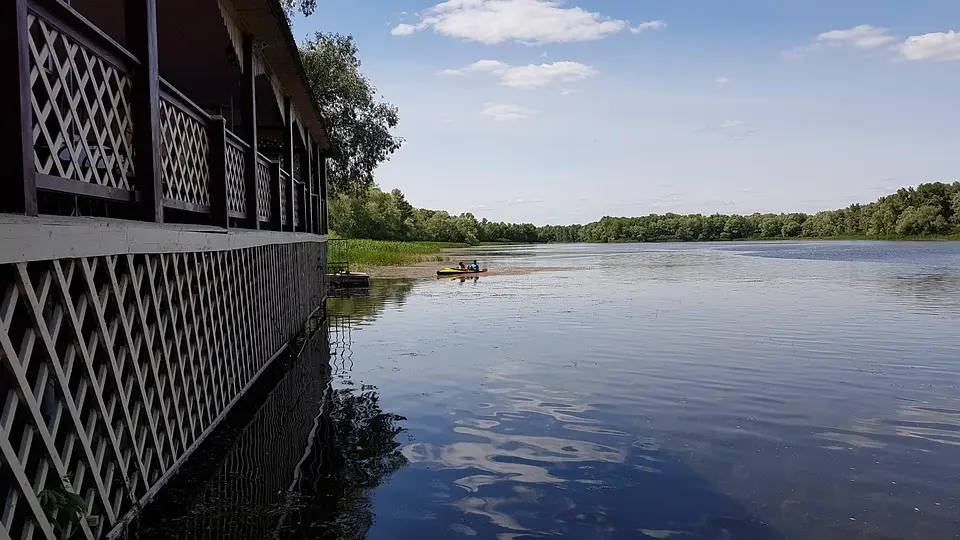Black Drum: Habitats - Backwater
Table of Contents
- Backwater Black Drum Fishing: An In-Depth Guide
- Understanding Backwater Environments
- Black Drum Habitats in Backwater Areas
- Behavior and Temperament in Backwaters
- Targeting Black Drum in Backwaters
- Bait Selection
- Rigging Techniques
- Retrieval Methods
- Spinning Gear Setups
- Seasonal Patterns
- Expert Tips and Community Insights
- Additional Resources
- Popular Search Terms Related to Backwater for Black Drum
Backwater Black Drum Fishing: An In-Depth Guide
 Image credit: sshegeda
Image credit: sshegeda
Fishing for black drum in backwater areas offers anglers a unique and rewarding experience. These robust fish, known for their size and strength, inhabit various coastal environments, providing both novice and seasoned fishermen with exciting challenges. This comprehensive guide delves into the intricacies of backwater black drum fishing, covering habitat features, fish behavior, effective techniques, spinning gear setups, rigging options, seasonal patterns, and expert tips.
Understanding Backwater Environments
Backwater areas, often referred to as estuaries or tidal creeks, are coastal regions where freshwater from rivers and streams meets and mixes with saltwater from the ocean. These environments are characterized by:
- Shallow Flats: Expansive, shallow regions with sandy or muddy bottoms.
- Oyster Beds: Clusters of oysters that create complex underwater structures.
- Mangroves and Marshes: Coastal vegetation providing shelter and feeding grounds.
- Channels and Cuts: Deeper pathways within the flats facilitating water movement.
These diverse habitats offer abundant food sources and protection for various fish species, including black drum.
Black Drum Habitats in Backwater Areas
Black drum (Pogonias cromis) are versatile and can thrive in multiple backwater settings:
- Shallow Flats: They forage for crustaceans and mollusks, often seen tailing as they dig into the substrate.
- Oyster Beds: The abundance of food attracts black drum, making these areas prime fishing spots.
- Mangroves and Marshes: Juvenile drum utilize these areas for shelter, while adults visit for feeding.
- Channels and Cuts: Larger drum navigate these deeper waters during tidal movements.
Behavior and Temperament in Backwaters
In backwater environments, black drum exhibit specific behaviors:
- Feeding Habits: Primarily bottom feeders, they consume crabs, shrimp, and small fish.
- Schooling: Younger drum often form schools, whereas larger adults may be solitary or in small groups.
- Tidal Influence: Their activity levels and locations shift with the tides, often feeding more aggressively during moving tides.
Targeting Black Drum in Backwaters
To effectively target black drum in backwater areas, consider the following techniques:
Bait Selection
- Live Bait: Shrimp, fiddler crabs, and small blue crabs are highly effective.
- Cut Bait: Pieces of mullet or squid can attract larger drum.
Rigging Techniques
- Carolina Rig: Ideal for presenting bait near the bottom, where drum feed.
- Jig Heads: Useful when fishing around structures like oyster beds.
Retrieval Methods
- Slow Dragging: Gently moving the bait along the bottom mimics natural prey movements.
- Hopping: Lifting and dropping the bait can entice curious drum.
- Dead-Sticking: Letting the bait sit stationary, relying on scent to attract fish.
Each method can be effective, depending on conditions and fish behavior.
Spinning Gear Setups
Selecting the appropriate spinning gear is crucial for a successful black drum fishing experience:
- Rod: A medium-heavy action rod, 7 to 8 feet in length, provides the necessary strength and sensitivity.
- Reel: A spinning reel in the 4000 to 5000 size range offers a good balance between line capacity and manageability.
- Line: 20 to 30-pound braided line is recommended for its sensitivity and strength, with a 20 to 30-pound fluorocarbon leader to reduce visibility.
Seasonal Patterns
Black drum exhibit seasonal movements:
- Spring: Increased activity as water temperatures rise; spawning occurs in some regions.
- Summer: Fish move to deeper, cooler waters but still frequent backwaters during cooler periods.
- Fall: Active feeding resumes in shallower areas, preparing for winter.
- Winter: In warmer climates, drum remain active; in cooler areas, they seek deeper waters.
Expert Tips and Community Insights
Experienced anglers offer valuable advice:
- Stealth Approach: Move quietly to avoid spooking fish in shallow waters.
- Tackle Selection: Use medium-heavy rods with 20-30 lb braided line to handle larger drum.
- Patience and Observation: Watch for signs like tailing fish or disturbed sediment to locate drum.
Engaging with local fishing communities can provide real-time insights and enhance your success.
Additional Resources
For visual learners seeking more tips on backwater black drum fishing, here's a recommended video:
Click the image above to watch a detailed guide on backwater black drum fishing.
Popular Search Terms Related to Backwater for Black Drum
| Search Term | Thumbnail | Link |
|---|---|---|
| Backwater Black Drum Techniques | Watch Video | |
| Best Live Baits for Black Drum in Backwater | Watch Video | |
| Backwater Retrieve Strategies for Black Drum | Watch Video | |
| Where to Find Black Drum in Backwater | Watch Video | |
| Black Drum Fishing Tips in Backwater | Watch Video |
Ask AI for More Info
Try our AI assistant for free—sign up to access this powerful feature.
👉 Sign Up to Ask AI